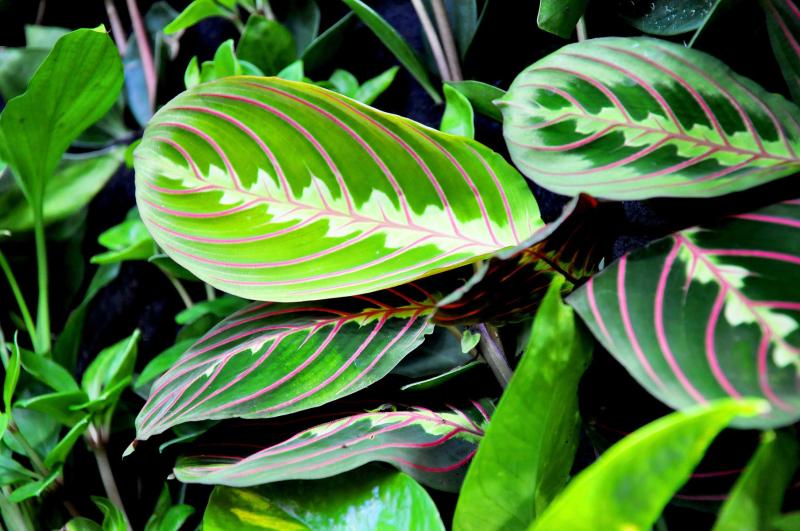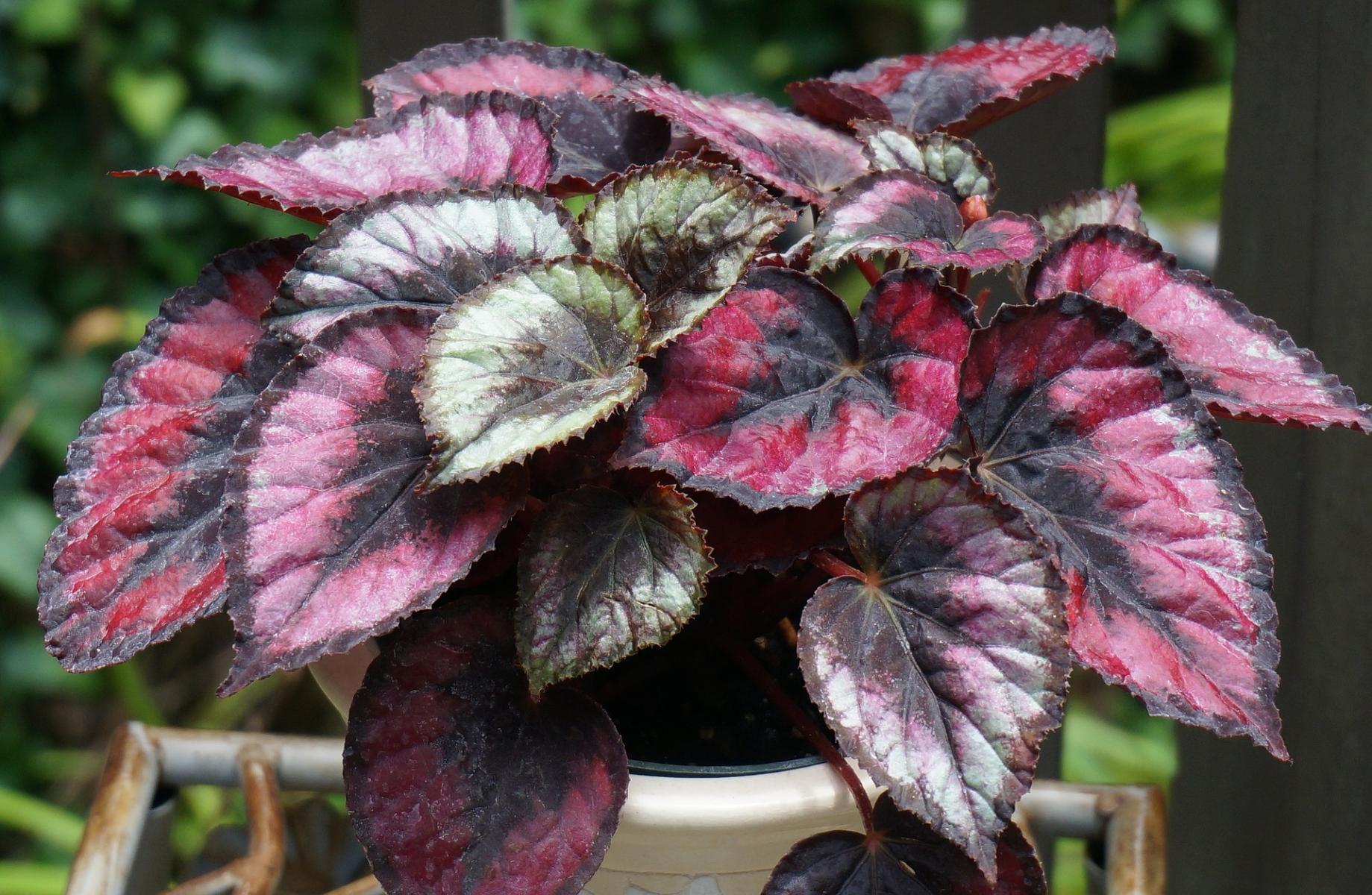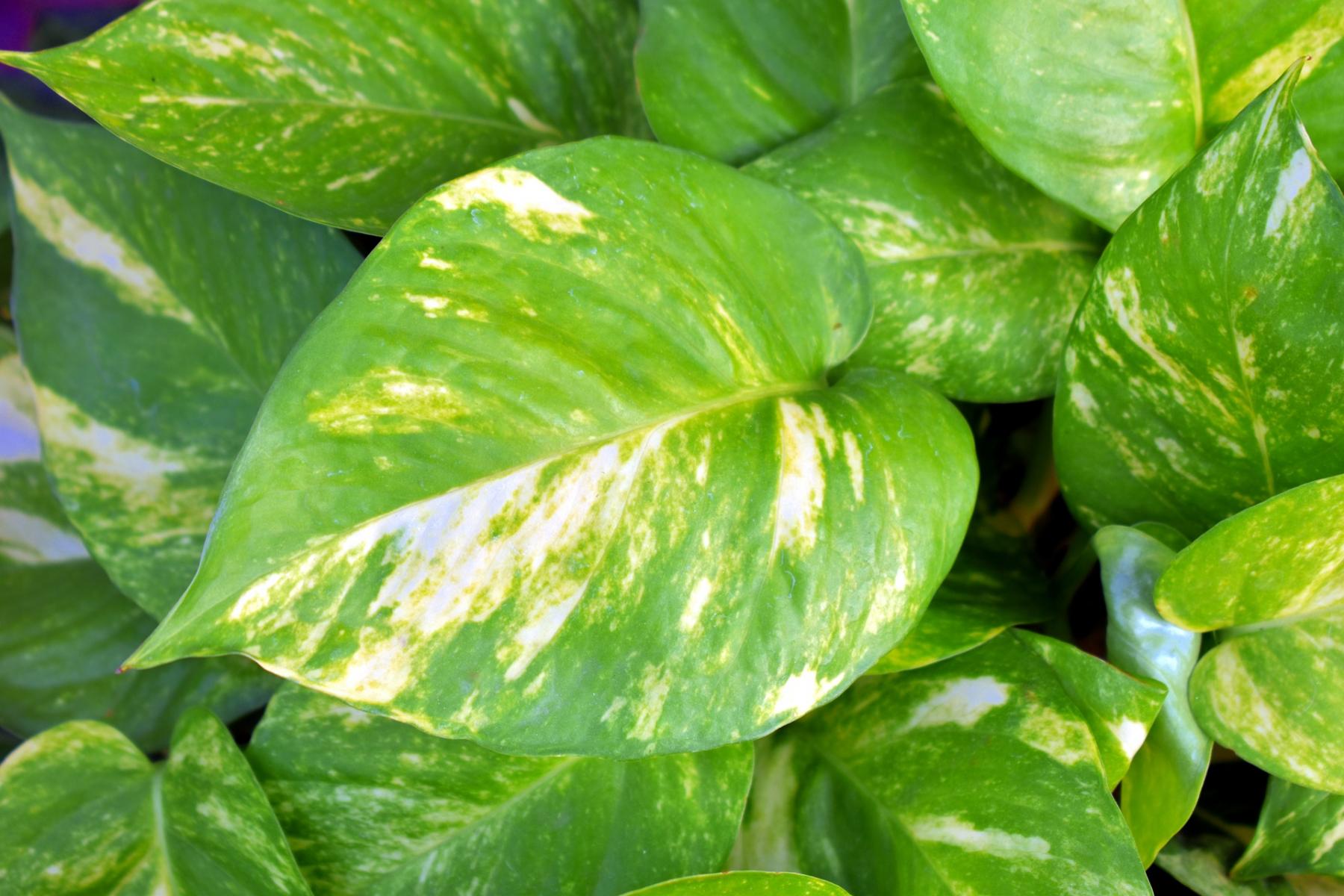
Last week we looked at using supplemental LED light to improve the growth of your houseplants during winter. Two more factors playing a key role in winter plant success are humidity and fertilization.
 Humidity
Humidity
Many houseplants are native to tropical regions, being adapted to rainforest or riverside humidity levels. Knowing this makes it easier to understand why growing some plants indoors can be such a challenge.
During the summer, air conditioning systems circulate cool, dry air in winter, furnaces produce warm, dry air. The Mayo Clinic recommends indoor humidity stay between 30-50% for human health and comfort, but many homes have much lower humidity levels. For plants, humidity requirements vary by species, but generally 70-80% is best.
Plants take in water through their roots and it is pulled up the stems, into leaves and released from tiny openings in the leaf surface through a process called transpiration. Water loss moves more quickly when temperatures are high, sunlight is intense, drafts are present, or humidity is low. Fast water loss through the leaves makes is more difficult for a plant to maintain a good hydration level.
Drying and browning around leaf edges or tips is a common symptom of low humidity. This is similar to marginal leaf scorch seen in outdoor trees during August, when leaf edges turn brown, dry, brittle and papery during very hot, dry conditions.
 Selecting plants based on their need for high humidity is one way to work around this problem. Ferns (many species), Rex begonias, Prayer Plant (Maranta spp.) and Calathea spp. are just a few of the plants requiring high humidity to grow well. Plants that tolerate low humidity well include cacti, succulents, cast iron plant (Aspidistra sp.), Chinese evergreen (Aglaonema sp.), Devil’s Ivy or money plant (Scindapsus aureus), Philodendrons and Draceanas, to name a few.
Selecting plants based on their need for high humidity is one way to work around this problem. Ferns (many species), Rex begonias, Prayer Plant (Maranta spp.) and Calathea spp. are just a few of the plants requiring high humidity to grow well. Plants that tolerate low humidity well include cacti, succulents, cast iron plant (Aspidistra sp.), Chinese evergreen (Aglaonema sp.), Devil’s Ivy or money plant (Scindapsus aureus), Philodendrons and Draceanas, to name a few.
Providing Extra HumidityIncreasing humidity throughout your entire home can be done by installing a humidifier on your HVAC system. This may provide you benefits, too, if your home air is uncomfortably dry during winter. Or use a portable humidifier to adjust levels in individual rooms.
Another option is to place plants in bathrooms or kitchens, rooms normally more humid than the majority of the house. Avoid placing plants on or near outside doors, radiators, heat vents and ducts.
Grouping plants together can also help. As plants release water from their leaves through transpiration, they create a small pocket of slightly higher humidity. Several plants grouped together can benefit each other.
 Creating a pebble tray is another option. Choose a tray or saucer, one to two inches deep and slightly larger than the plant’s container, two to three inches on each side. Fill it with gravel or decorative stones. Place the plant on top of the stones and pour water amongst the stones in the saucer, keeping the water below the base of the plant's container. The plant should never sit in water, which would cause constantly wet soil and root rot. As water evaporates from the pebble tray, it will increase humidity around the plant’s foliage. Replenish water in the pebble tray as needed.
Creating a pebble tray is another option. Choose a tray or saucer, one to two inches deep and slightly larger than the plant’s container, two to three inches on each side. Fill it with gravel or decorative stones. Place the plant on top of the stones and pour water amongst the stones in the saucer, keeping the water below the base of the plant's container. The plant should never sit in water, which would cause constantly wet soil and root rot. As water evaporates from the pebble tray, it will increase humidity around the plant’s foliage. Replenish water in the pebble tray as needed.
Finally, use a cloche or bell jar. This tall, bell-shaped, glass covering is placed over humidity-loving plants to trap moisture evaporating from the soil or being released from the leaves, maintaining a higher level of humidity.
Misting plants is not an effective solution. You would need to mist plants on a very frequent basis, every few minutes, to make any real difference in overall air humidity levels. Plus, continual leaf wetness makes plants more susceptible to leaf spot diseases. If you do mist your plants, do it early in the day so their leaves are dry by nighttime. Cool, damp leaf surfaces during night are an ideal environment for disease infection.
Next week we’ll finish this series with a close look at houseplant fertilization, particularly in winter.
Images
- Rex begonia 'Red Kiss'. Image from Pixabay.com
- Cast Iron Plant. Image from Missouri Botanical Garden.
- Devil's ivy, Pothos sp. Image from Pixabay.com